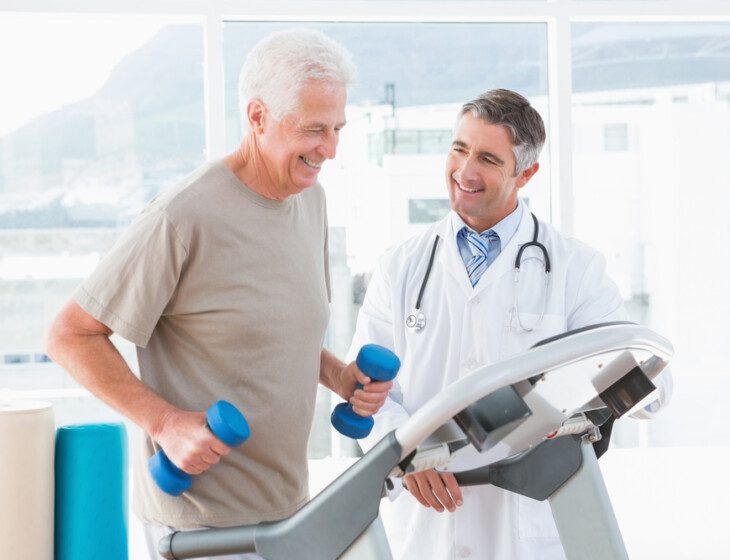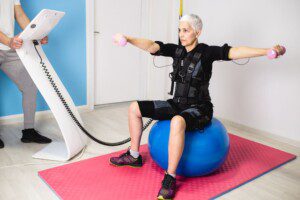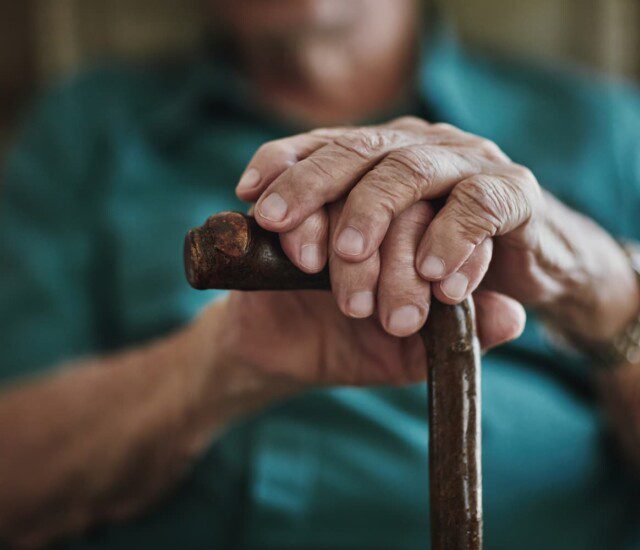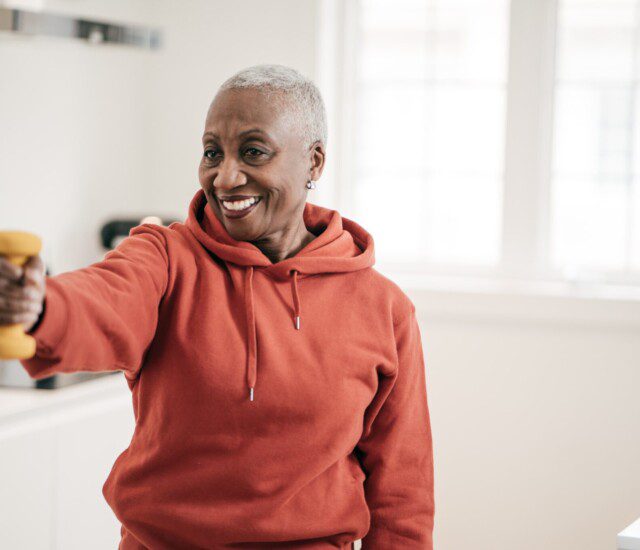As the senior population rapidly grows across the world, the demand for innovative technology rises with it. New rehabilitation technology is constantly being implemented in unique ways to provide better outcomes for seniors with a wide range of physical and mental health conditions. These incredible advancements in assistive technology were once completely unrealistic for senior rehabilitation settings.
Now, through the combination of high demand, the receding costs of new technology, and the emergence of virtual reality, assistive technology is being used more broadly than ever before. The following is a small sampling of new rehabilitation technology that may soon change senior rehabilitation services as we know it.
What is Assistive Technology?
Before diving into the specifics of new improvements in rehabilitation tech, it’s essential to understand the concept of assistive technology for seniors. At its simplest definition, assistive technology is any physical or digital device that assists people perform the tasks of daily living. This definition can encompass several things, from physical hardware like hearing aids and wheelchairs to integrative software systems that help facilitate communication. Assistive technology in the context of senior rehabilitation can also mean tools that help seniors grow and improve their functioning as part of a rehabilitation program.
New Assistive and Rehabilitative Technology for Seniors
Anti-Gravity Treadmills
NASA initially developed anti-gravity treadmills so that astronauts could safely exercise at the International Space Station. Now, they’re being used as a new rehabilitation technology to help seniors and those with physical limitations regain mobility. Anti-gravity treadmills are essentially suspended treadmills that use air pressure to unweight users from 100% to as low as 20% body weight in 1% increments. This unweighting allows seniors to exercise with low-impact, pain-free movements.
GlideCycle
Similar to the unweighting effect of anti-gravity treadmills, the GlideCycle is an altered bicycle that reduces body weight and enables seniors to walk or jog with minimal ground force impact. A harness suspends the user between an arched frame, allowing them to use their legs to propel forward freely. Users experience an 86% reduction in ground reaction force, enabling them to walk or jog for longer while helping muscles relearn movements. Although using a GlideCycle requires a fair amount of balance and practice, it has been deemed an ideal tool for helping former runners and athletes feel the exhilaration of running again.
E-Stim
Electrical stimulation (e-stim) has been used in rehabilitative services for years, but is just now being widely used in senior living communities and rehab facilities. E-stim is a type of physical therapy modality using electrical signals to elicit a response in muscle tissue. An important benefit of e-stim therapy is that it’s largely non-invasive—a rehabilitation therapist attaches patches to specific body parts, and electrical signals do the rest. In recent years, e-stim has been combined with ultrasound technology to identify the source of and effectively treat muscle spasms, chronic musculoskeletal pain, post-surgical pain, tendonitis, bursitis, and more.
Shortwave Diathermy
Shortwave diathermy is a new rehabilitation technology using high-frequency electromagnetic energy to generate heat inside a targeted tissue. Sometimes used in physical therapy for arthritis, diathermy can treat a range of physical ailments from fibromyalgia and tendonitis to muscle spasms. It’s also used to increase muscle flexibility, which can allow seniors to perform other physical rehabilitative exercises for longer and with less residual pain. In shortwave diathermy, two electrodes are positioned to focus on a specific pain-causing area to heat muscle fibers, relaxing stiff fibers and improving movement.
Robotics
A relatively new kind of rehabilitative therapy called Robotics-Assisted Therapy (RT) has become hugely popular in recent years. In fact, the latest research shows the global rehabilitation robots market is expected to grow at a steady rate of 16.1% through 2029. Many types of RT being used in physical and occupational therapy today have produced incredible outcomes for seniors. Using robotics in rehabilitative services can assist with different sensorimotor functions, assess seniors’ ability to move, and tailor therapy exercises and movements. From robotic leg braces that assist with gait movement and upper-arm sleeves that help stroke patients regain hand control to advanced wheelchairs with robotic arms and standing capabilities, the application of RT is endless – and ever-evolving.
Video Games
While not a new technology, video games are being used in new and beneficial ways in the world of rehabilitation. Interactive video game consoles like the Nintendo Wii, in which the user controls the video game using a digital sensor, have been found to have powerful physical and mental health benefits. Also called “exergames” due to their exercise-centric nature, this fairly new rehabilitation technology can be easily used in any rehab facility. Exergames have been found to substantially improve mobility, balance, strength, and even motor skills. Beyond physical benefits, research from the University of Illinois found that older adults between 60 and 70 years old improved their cognitive function by playing video games, with some even performing better on tests of working memory.
Virtual Reality Rehabilitation Therapy
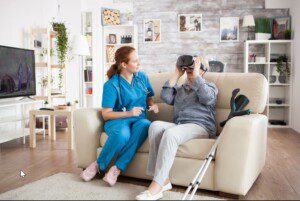
Virtual reality (VR) is a blossoming technology taking the world by storm. It’s being used in a variety of medical settings today, including as a new rehabilitation technology for seniors. Less complicated than it seems, users simply put on virtual reality goggles and gloves with sensors that track movements for a completely immersive experience. Virtual reality therapy programs are often structured as engaging games that guide seniors through therapy exercises in a fun and unique way.
OmniVR is the world’s first 3D virtual rehabilitation system designed for older adults. It works by measuring a senior’s movements and capturing key data that doctors and therapists can use to identify effective rehabilitation treatments more clearly.
Neuro Rehab VR is another groundbreaking new rehabilitation technology that uses artificial intelligence. It’s ideal for physical therapy following a stroke, brain injury, or spinal cord injury. By employing machine learning, the system tailors each exercise to a senior’s specific therapy needs and abilities. The customized virtual therapy exercises record physiological and kinematic responses, quantifying the patient’s progress with scores and metrics over time. As virtual reality continues to evolve, look for therapists, doctors and senior living communities to fully adopt it for rehabilitative services.
Innovative Rehabilitation for Seniors at Harbour’s Edge
As a premier senior living community in Delray Beach, Florida, Harbour’s Edge is dedicated to helping seniors recover more quickly and completely with the absolute best rehabilitation care in the Delray Beach area. We feature a friendly, dedicated care team who will work closely with you, your family, and your physician to create a customized care plan. Our restorative rehabilitation services—including physical, occupational, and speech therapies— use the latest technology to help you quickly recover and get back to your optimal life. To learn more about our rehabilitation services, contact us by filling out the form at the bottom of the page or call us any time at 888-543-5176.
